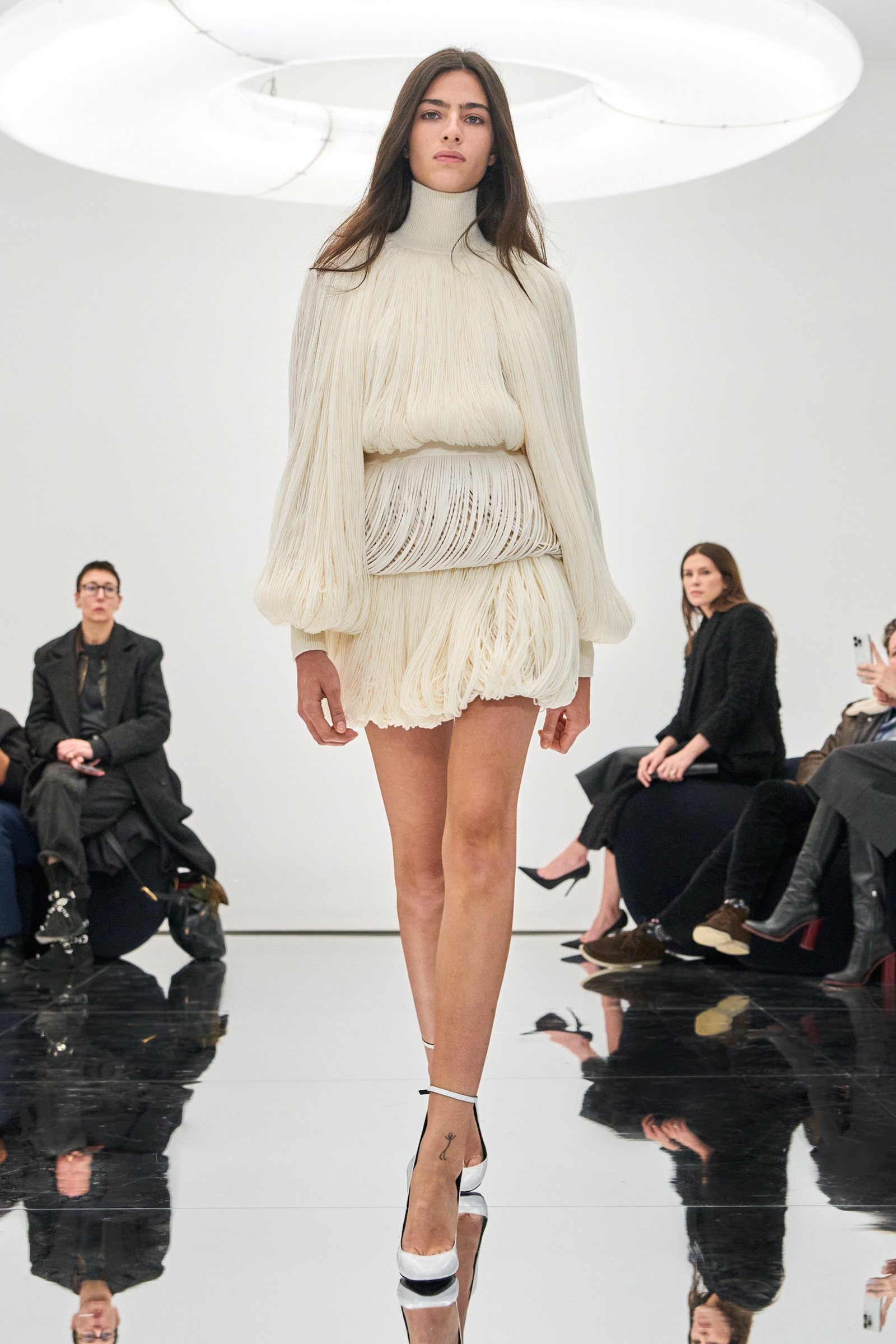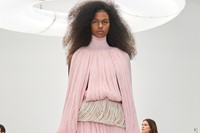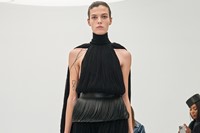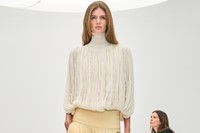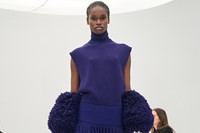For many, haute couture is about indulgence and extravagance – indeed, couture has often become a synonym for the heavily embellished and bedazzled, ball gowns and crinolines and acres of fabric fabulously-worked. Which of course is wonderful, but Christian Dior himself once said, “A well-cut dress is the dress which contains the least cuts.”
And, indeed, in a medium where nothing is off-limits, working with an economy (for want of a better word) can yield the incredible. That was the idea behind Pieter Mulier’s latest Summer-Fall Alaïa collection – which wasn’t haute couture, but was shown within its week, keyed as it is to the notions of craft and preciosity inherent to the metier. Mulier didn’t talk about economy, rather about “simplicity and purity, about less meaning more”. His Alaïa wasn’t limited – and indeed, Azzedine Alaïa himself didn’t entertain the notion of limitation. He was a man who worked obsessively, expounding time and effort on his designs until they reached the levels of perfection he demanded as a norm. But what Mulier did was to reduce and strip his collection back to an essence, and to the essential. Which, in couture, is tantamount to a revolution.
Mulier decided to work with one thread – a fine merino wool, which he spent a year developing into fabrics and knits with Alaïa’s factories, many of whom the label has worked with since it first began in 1981. The designer challenged them to reinvent the yarn again and again, using it as the basis for tailoring fabrics and knits, sure, but also frothed into faux fur, tightly packed into chenilles, woven into organza, mixed with nylons for outerwear … in short, every feasible permutation, and some unimaginable ones. In a moment when excess is the norm, Mulier yanked everything back from the lip of the volcano and embedded it in creativity. It was glorious to see.

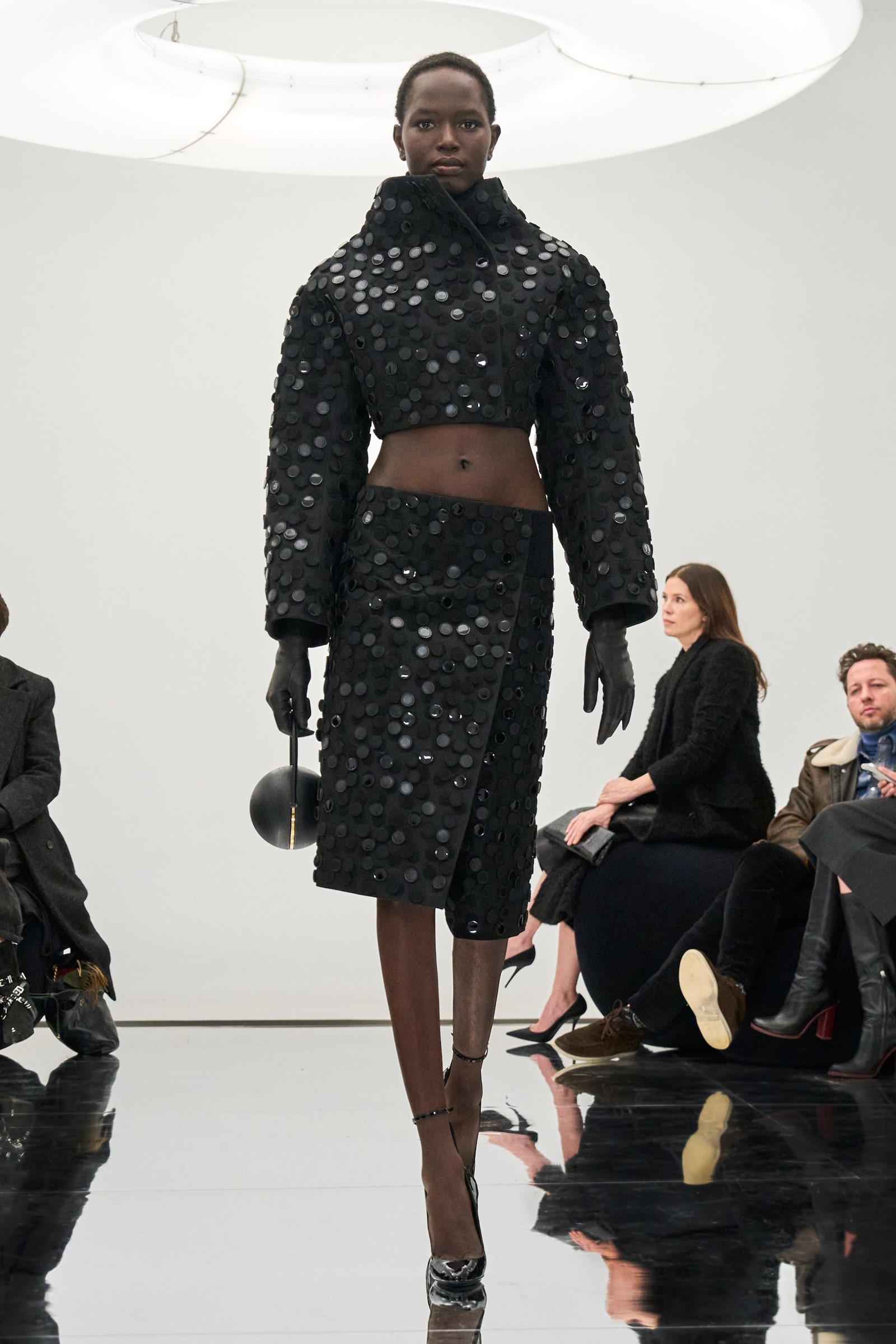
The clothes themselves reflected that fundamental simplicity of ideas, and ideals. Many were based on the circle, fabric skilfully cut to lap around the body in a seemingly continuous shape. That was a repeated motif – skeins of wool, rather than being knitted, formed loops to curtain the body, both concealing and revealing skin; denims (in wool, again) were lifted from the loom before they were entirely woven, their vertical warp threads forming fine fringes around the body, looping into a skirt. Circles, loops, curves, constantly turning back and forth. A coat was cut as two whorls, attached at cuff, hems swirling around the body. A sequence of dresses was formed on a three-dimensionally printed base, inspired by Alaïa’s figure-hugging belts and sinuous, serpentine zipper-scrolled dresses, which locked around the body with no fastenings whatsoever, fabric seeming to scroll unsuspended, leaving a flank bared.
For Mulier, the curves and circles had additional meaning – the curves of women, obviously, but also circles of friends, and perhaps circles of trust. He works with a tight-knit creative team each season – Dame Pat McGrath on make-up, Duffy on hair, and Ashley Brokaw to cast the models, many of whom also appear time and time again. Gustave Rudman composes music specially for each show, devising it in tandem with the collection and recording with his orchestra. And this time, staged as it was to three intimate groups in the Alaïa store on rue de Marignan, there was an additional sense of intimacy – of friends, showing up for their friend. Raf Simons, Monica Bellucci and Naomi Campbell sat in my viewing, perched under loop-shaped lights designed by Azzedine’s own close friend Marc Newson, atop voluptuous sofas by Philippe Malouin.
Circularity was also there in the clothes – not in the fabrics, but the ideas. If this collection was a shift away from Mulier’s exploration of the rampant sexuality of Azzedine Alaïa’s early work, that was no accident. In a sense, it mirrored Alaïa’s own development – his early clothes, in leather pulled taught around the body and studded with metal, grabbed attention. It was subversive, provocative, aggressive even. But by the late 1980s, Alaïa had softened, exploring subtler curves, soon-to-be-trademark knits, a gentleness. After arresting everyone’s attention – again – with a vision shaped by Azzedine Alaïa’s early work, Mulier has mellowed, easing his work and allowing the craft to seduce as much as the shapes and sexuality. And, amidst the noise and bombast of couture week, his Alaïa managed to circle back on itself to quietly assert its handcraft, its heritage, and its soul.
